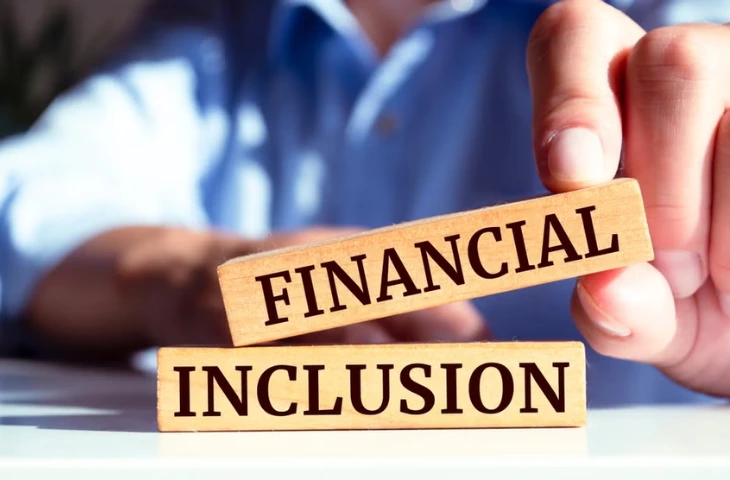Financial Inclusion is the process of ensuring that individuals and businesses have access to useful and affordable financial products and services. These services include banking, credit, insurance, and payment systems. The goal is to make financial resources accessible to everyone, especially those who are underserved or excluded from the formal financial system. Financial Inclusion plays a crucial role in reducing poverty, promoting economic growth, and improving living standards.
What is Financial Inclusion?
Financial Inclusion means providing access to banking and financial services at affordable costs to all sections of society. It ensures that people in rural areas, low-income groups, and marginalized communities can save money, borrow loans, and make payments easily. It is a key driver of economic empowerment and financial literacy.
Importance of Financial Inclusion
Financial Inclusion benefits individuals, businesses, and the economy as a whole.
- Empowering Individuals: Provides access to savings accounts, credit, and insurance, enabling people to meet their financial needs.
- Poverty Reduction: Helps low-income families access loans and microfinance for education, healthcare, and small businesses.
- Promoting Entrepreneurship: Easier access to credit encourages self-employment and small business growth.
- Economic Growth: Increases savings and investment in the economy, supporting development projects.
- Financial Literacy: Educates people about responsible use of financial products and digital banking.
Key Initiatives for Financial Inclusion in India
The Government of India and the Reserve Bank of India (RBI) have launched several initiatives to promote Financial Inclusion:
- Pradhan Mantri Jan Dhan Yojana (PMJDY): Provides zero-balance bank accounts with debit cards and insurance coverage.
- Microfinance and SHGs: Self-Help Groups and microfinance institutions provide small loans to rural and low-income individuals.
- Digital Payment Systems: Platforms like UPI, mobile banking, and e-wallets make transactions easy and transparent.
- Financial Literacy Programs: RBI and NABARD conduct programs to educate people about banking and credit facilities.
- Direct Benefit Transfers (DBT): Government subsidies and welfare payments are directly transferred to bank accounts.
Challenges in Financial Inclusion
Despite progress, several challenges remain:
- Limited Access in Rural Areas: Many remote areas still lack banking infrastructure.
- Low Financial Literacy: Many people are unaware of banking products and digital payment systems.
- Digital Divide: Internet access and smartphone availability are limited in certain regions.
- Trust Issues: People may distrust formal financial institutions and prefer informal money lenders.
Role of Technology in Financial Inclusion
Technology has significantly improved Financial Inclusion by:
- Enabling mobile banking for remote transactions.
- Facilitating digital payments through UPI, QR codes, and e-wallets.
- Allowing online banking and direct benefit transfers without visiting a bank branch.
- Providing financial education apps to improve literacy.
Conclusion
Financial Inclusion is essential for inclusive growth, economic development, and poverty reduction. By providing access to banking, credit, insurance, and digital payment systems, it empowers individuals and strengthens the economy. Government initiatives, technology, and financial literacy programs are key to achieving universal Financial Inclusion
FAQs
Q1. What is Financial Inclusion?
Financial Inclusion is the process of providing access to banking, credit, insurance, and payment services to all individuals and businesses, especially those underserved by the formal financial system.
Q2. Why is Financial Inclusion important?
It empowers individuals, reduces poverty, promotes entrepreneurship, increases economic growth, and improves financial literacy among marginalized communities.
Q3. What are the key initiatives for Financial Inclusion in India?
Key initiatives include Pradhan Mantri Jan Dhan Yojana (PMJDY), microfinance through Self-Help Groups (SHGs), digital payment systems like UPI, and Direct Benefit Transfers (DBT).
Q4. What challenges does Financial Inclusion face?
Challenges include limited banking access in rural areas, low financial literacy, digital divide, and lack of trust in formal financial institutions.
Q5. How does technology support Financial Inclusion?
Technology enables mobile banking, digital payments, online banking, financial literacy apps, and easier access to government benefits, bridging gaps in access and convenience.
- SBI PO Mains & Final Score Card 2025 Out, Check Mains and Interview Marks
- IBPS SO Mains Scorecard 2025 Out, Check and Download Marks
- SBI Clerk Vacancy 2025 Out, State Wise Vacancy List 6589 Seats
- Bank Mergers List in India, 1993 to 2025, Latest Updates
- Bank of India Credit Officer Cut Off 2025-26, Check Details
- SBI to Hire 18,000 Employees in FY26, SBI Hiring Update
Hi, I’m Tripti, a senior content writer at Oliveboard, where I manage blog content along with community engagement across platforms like Telegram and WhatsApp. With 3+ years of experience in content and SEO optimization related to banking exams, I have led content for popular exams like SSC, banking, railways, and state exams.
